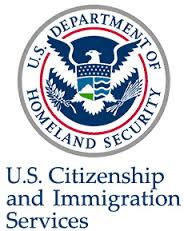Immigration News & Updates eNewsletter
eNewsletter
POSTING DATE: December 25, 2017
Learn More About:
Immigration News & Updates eNewsletter © 2011 - 2017
For questions about U.S. Residency, Green Cards and Immigration Visas, Visit our Website at: www.ImmigrateToday.com or call our office at: (954) 382-5378
Check Out This Cool Stuff For Immigrants....
Immigration
Questions & Answers
This Week's Immigration News
Question: I filed papers for my daughter earlier this year and her case got denied. She is 28 and single and I am listed on her birth certificate from the day she was born. I am her dad, but the problem is that I never married her mom. The immigration said I didn’t prove the relationship with my daughter so the case got denied. Is that right, can they do that? What about blood dna tests?
Answer: That is a great question. In cases where a father was never married to the child’s mother, the USCIS will generally require that the father provide extensive additional documents to prove that a parental “relationship” existed and continues to exist to prove that a bona fide father-child relationship was established between the father and the child while the child was under 21 years of age. The law requires that the father prove he has demonstrated an active concern for the child’s support, instruction, and general welfare; that the father and child actually lived together or the father held the child out as his own; that the father provided for some or all of the child’s needs, or that in general the father’s behavior evidenced a genuine concern for the child.
Without documentary evidence, the USCIS will generally deny family petitions filed for children, even when they have no doubt that you are the biological father. The main issue is always, did this biological father show “care and concern” for his child while the child was a minor under age 21. This can be shown by documentation including:
a. Cancelled checks or receipts of money given by the father to the child, Western Union receipts, etc.
b. Father’s income tax returns showing the child as a dependent.
c. Father’s medical Insurance records listing the child’s medical coverage.
d. Father’s insurance policy showing the child as a beneficiary.
e. Child’s School records showing petitioner as the child’s father.
f. Child’s medical/Vaccination records listing the father’s name.
g. Pictures of the father and child together
h. Child’s Baptism & Church records showing the father’s relationship with the child;
i. If the father and child lived together, documents from each showing their address was the same
j. Other similar and relevant documents, including: Letters, telephone bills, airline tickets, email printouts and other communications between the father and child.
k. Notarized affidavit from the father, acknowledging the child as the father’s illegitimate child, describing the circumstances under which the child came into being as his illegitimate child, stating facts indicating a parent-child relationship, and whether he has custody of the child, and additional Affidavits from the child’s mother regarding the father providing support, caring for the needs of the child and providing for the child’s general welfare other notarized Affidavits of relatives, friends, neighbors, school officials, or other associates stating facts showing that they personally know that there was a romantic relationship between the petitioning father and the child’s mother, that the illegitimate child is their child, and that there is a bona fide father and child relationship.
Note that affidavits alone are generally not enough proof of the relationship without other documents such as proof of child support payments, etc.
In your case, we can refile the case for your daughter if you can provide some of the additional documentary evidence above to prove your relationship.
Helpful Immigration Tips You Can Use
Immigration How To:
How Do I Find Out Why My Case Is Taking So Long?
Family Sponsorship – Check Out the Visa Bulletin Before Making Plans To Immigrate
Government Publishes Trump Administration Immigration Hit List
Making An Online Inquiry For Cases Pending With the USCIS
Many U.S. Citizens and U.S. Residents sponsor their foreign family members to immigrate to the U.S.. However, often, neither the sponsor, nor the family member fully understands how long it will actually take to immigrate.
Understanding the approximate length of time it will likely take to be able to immigrate to the U.S. helps foreign family members plan for the future. This is particularly important when family members being sponsored have minor children. Immigration regulations only allow children who are immigrating along with parents to obtain U.S. Residency if they are under age 21 at the time the family is called to the U.S. Consulate for the final Immigrant Visa appointment.
You can make an online inquiry for a case pending with the USCIS by filing an “e-Request”. To make an inquiry, be sure to have your case number handy.
For more information, visit the USCIS E-Request webpage
Go online to: E-Request
Over the past year, USCIS processing times for issuance of both employment authorization documents (EAD) and advance parole (travel permits) have significantly increased. Under previous Obama policy, the target USCIS processing time for EAD and travel permits was 90 days.
However, the Trump administration does not appear to be giving priority to these and other immigration matters, instead allowing processing delays to increase to over 4+ months in some circumstances. This is particularly frustrating for Residency applicants who are unable to work or travel until the documents are issued.
USCIS Work Authorization and Travel Permit
Processing Delays Increase
Fortunately, some applicants with work authorization who have applied for extensions are able to work for up to 180 days while waiting for renewals, including those with pending adjustment of status applications (I-485). However, the work authorization document itself does not show the automatic extension, leading to confusion and often loss of employment for some who are unaware of the 180 day extension.
If your EAD is expiring and you are unsure whether or not you are eligible for an automatic extension give us a call at: 954-382-5378 for free advice.
This comes at a time when the USCIS has already significantly reduced H-1B visa issuance by imposing new wage level policies retroactively.
Elimination of H-4 Employment Authorization Document (EAD) Program: Currently, spouses (H-4 visa) of certain H-1B visa foreign workers are eligible for employment authorization called an “EAD”. However, the Trump administration likely intends to reverse this policy and prohibit H-4 spouses from working, as early as February 2018.
Work Authorization for foreign Students: Under current policy, F-1 and M-1 students who graduate from authorized programs of study in the U.S. are eligible to apply for work authorization for a limited period of time, under a program called “Optional Practical Training (OPT) and “Curricular Practical Training (CPT)”. The Trump administration plans to revise the program under its policy objective entitled Practical Training Reform. The policy change could severely restrict the program or eliminate it altogether. The administration plans to publish the new rule in the Fall of 2018.
USCIS Changes Policy on Determining
Cuban Citizenship
The USCIS has changed its policy for Cuban nationals regarding what constitutes Cuban Citizenship for those born outside of Cuba. Cuban nationals who reach U.S. borders have a special program called “Cuban Adjustment Act (CAA)”, which allows them to apply for U.S. Residency after having been inside the U.S. for one year. Until recently, USCIS policy allowed Cubans born outside Cuba to Cuban parents to prove Cuban nationality by submitting a consular certificate documenting an individual’s birth outside of Cuba to a Cuban parent, as evidence of Cuban citizenship. Under the new policy, the USCIS will only accept valid Cuban passports and Cuban Civil Registry documents issued in Havana as proof of Cuban citizenship.
The government Office of Information and Regulatory Affairs (OIRA), recently published an updated list of agency rulemaking activity under the Trump Administration, which includes several immigration programs the administration is targeting for either elimination or the imposition of tougher restrictions. Here are a few of the current Immigration rules being considered for revision:
H1B Professional Worker Visa: The proposed rule, entitled Strengthening the H-1B Nonimmigrant Visa Classification Program, is aimed at toughening the standards for foreign workers to qualify for the visa by revising the definition of which occupations qualify as a “specialty occupation” and restricting the definition of what constitutes a qualifying “employer-employee relationship.”
Question: I have been married to my husband since February 2016. I have received my two years green card which will be expires in August 2018. How soon will I be able to apply for my USA citizenship.
Answer: You must apply for your Removal of Condition 90 days before expiration of your Green Card, then once your permanent Residency is approved and you have been a U.S. Resident for 2 years and 9 months and as long as you and your husband are living together as a real married couple and have extensive documentation to prove your continuing marital relationship, you can apply for Early Naturalization in May of 2018.
As frequently happens, children who were minors at the time their parents were originally sponsored, may have “aged out” and be in their mid to late 20’s and thus ineligible to immigrate to the U.S. along with their parents. This is a tragic situation, but very common.
The only saving grace is that under the Child Status Protection Act “CSPA”, the time the I-130 family petition was processing can be subtracted from the age of the child. For instance, if the I-130 petition was filed in 1998 and was not approved until 2003, it was processing for 5 years. Therefore, at the time the Immigrant Visa becomes available, 5 years can be subtracted from the age of a child to determine if the child is still “technically” below age 21 for immigration purposes.
So, the best advice is to visit the Visa Bulletin website at: Visa Bulletin to view the various family relationship waiting lines so you understand how long the wait will be and understand that some older children may not be eligible to immigrate along with the parents when the time comes. You can find out more about immigration waiting times by reading our resource section: Understanding the Immigrant Visa process
Happy Holidays!












